Health Care > EXAM > [REVIEWED] ATI MED-SURG PROCTORED EXAM TEST BANK QUESTION AND ANSWERS 2023 NEW UPDATE WITH NGN (All)
[REVIEWED] ATI MED-SURG PROCTORED EXAM TEST BANK QUESTION AND ANSWERS 2023 NEW UPDATE WITH NGN
Document Content and Description Below
[REVIEWED] ATI MED-SURG PROCTORED EXAM TEST BANK QUESTION AND ANSWERS 2023 NEW UPDATE WITH NGN MULTIPLE CHOICE 1. Which question asked by the nurse will give the most information about the patie... nt’s metastatic bone cancer pain? a. “How long have you had this pain?” b. “How would you describe your pain?” c. “How much medication do you take for the pain?” d. “How many times a day do you take medication for the pain?” ANS: B 2. A patient who uses a fentanyl (Duragesic) patch for chronic cancer pain suddenly complains of rapid onset pain at a level 9 (0 to 10 scale) and requests “something for pain that will work now.” How will the nurse document the type of pain reported by this patient? a. Somatic pain b. Referred pain c. Neuropathic pain d. Breakthrough pain ANS: D 3. The nurse teaches a student nurse about the action of ibuprofen. Which statement, if made by the student, indicates that teaching was effective? a. “The drug decreases pain impulses in the spinal cord.” b. “The drug decreases sensitivity of the brain to painful stimuli.” c. “The drug decreases production of pain- sensitizing chemicals.” d. “The drug decreases the modulating effect of descending nerves.” ANS: C 4. A nurse assesses a patient with chronic cancer pain who is receiving imipramine (Tofranil) in addition to long-acting morphine. Which statement, if made by the patient, indicates to the nurse that the patient is receiving adequate pain control? a. “I’m not anxious at all.” b. “I sleep 8 hours every night.” c. “I feel much less depressed since I’ve been taking the Tofranil.” d. “The pain is manageable and I can accomplish my desired activities. ANS: D 5. A patient with chronic back pain has learned to control the pain with the use of imagery and hypnosis. The patient’s spouse asks the nurse how these techniques work. Which response by the nurse is best? a. “The strategies work by affecting the perception of pain.” b. “These techniques block the pain pathways of the nerves.” c. “Both strategies prevent transmission of painful stimuli to the brain.” d. “The therapies slow the release of chemicals in the spinal cord that cause pain.” ANS: A 6. A patient who is receiving sustained-release morphine sulfate (MS Contin) every 12 hours for chronic pain experiences level 9 (0 to 10 scale) breakthrough pain and anxiety. Which action by the nurse is best? a. Provide amitriptyline (Elavil) 10 mg orally. b. Administer lorazepam (Ativan) 1 mg orally. c. Offer ibuprofen (Motrin) 400 to 800 mg orally. d. Give immediate-release morphine 30 mg orally. ANS: D 7. A patient with chronic neck pain is seen in the pain clinic for follow-up. In order to evaluate whether the pain management is effective, which question is best for the nurse to ask? a. “Can you describe the quality of your pain?” b. “Has there been a change in the pain location?” c. “How would you rate your pain on a 0 to 10 scale?” d. “Does the pain keep you from doing things you enjoy?” ANS: D 8. A patient with second-degree burns has been receiving hydromorphone through patient- controlled analgesia (PCA) for a week. The patient wakes up frequently during the night complaining of pain. What action by the nurse is most appropriate? a. Administer a dose of morphine every 1 to 2 hours from the PCA machine while the patient is sleeping. b. Consult with the health care provider about using a different treatment protocol to control the patient’s pain. c. Request that the health care provider order a bolus dose of morphine to be given when the patient awakens with pain. d. Teach the patient to push the button every 10 minutes for an hour before going to sleep, even if the pain is minimal. ANS: B 9. The nurse assesses that a patient receiving epidural morphine has not voided for over 10 hours. What action should the nurse take initially? a. Monitor for withdrawal symptoms. b. Place an indwelling urinary catheter. c. Ask if the patient feels the need to void. d. Document this allergic reaction in the patient’s chart. ANS: C 10. When visiting a hospice patient, the nurse assesses that the patient has a respiratory rate of 11 breaths/minute and complains of severe pain. Which action is best for the nurse to take? a. Inform the patient that increasing the morphine will cause the respiratory drive to fail. b. Tell the patient that additional morphine can be administered when the respirations are 12. c. Titrate the prescribed morphine dose upward until the patient indicates adequate pain relief. d. Administer a nonopioid analgesic, such as a nonsteroidal antiinflammatory drug (NSAID), to improve patient pain control. ANS: C [Show More]
Last updated: 6 months ago
Preview 1 out of 673 pages
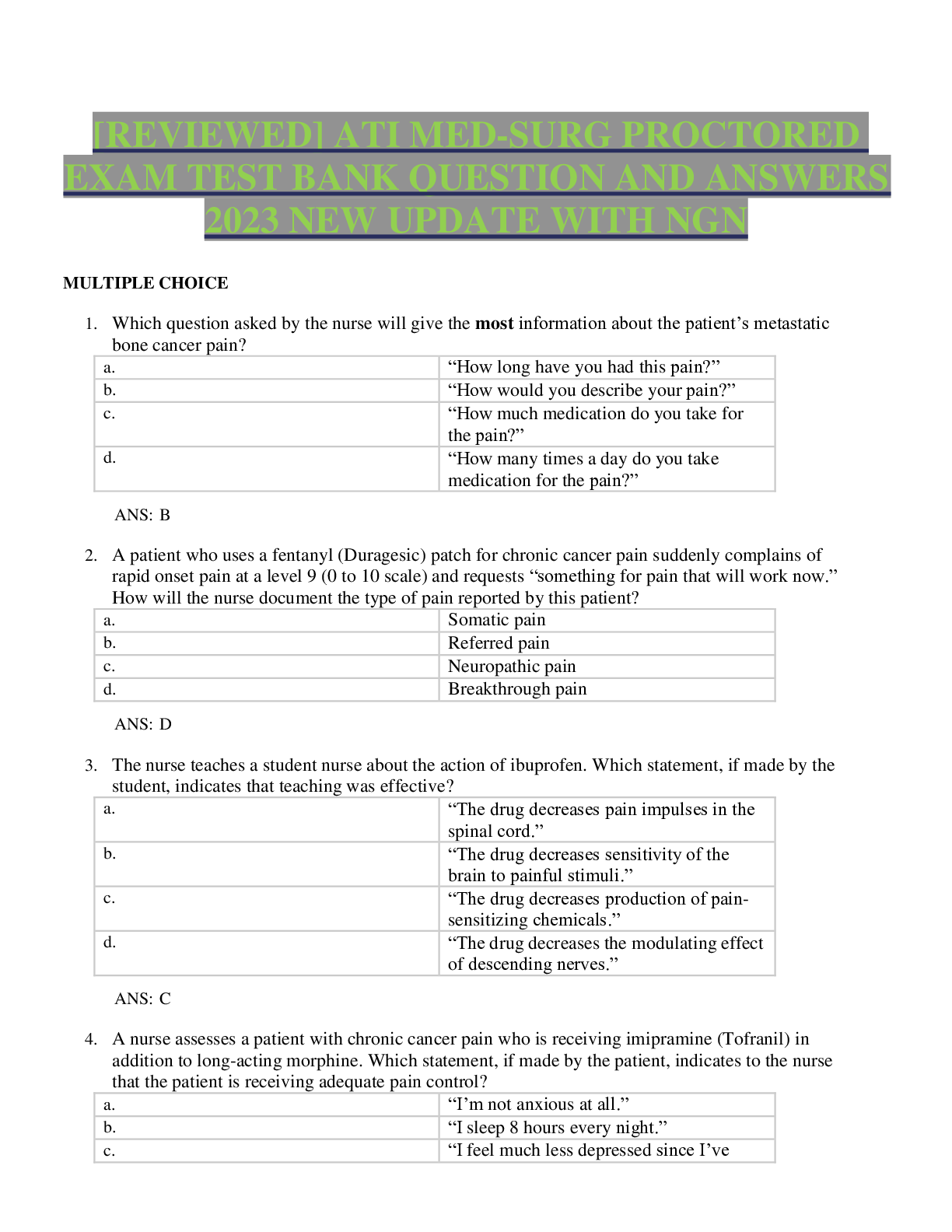
Reviews( 0 )
Document information
Connected school, study & course
About the document
Uploaded On
Nov 12, 2023
Number of pages
673
Written in
Additional information
This document has been written for:
Uploaded
Nov 12, 2023
Downloads
0
Views
61

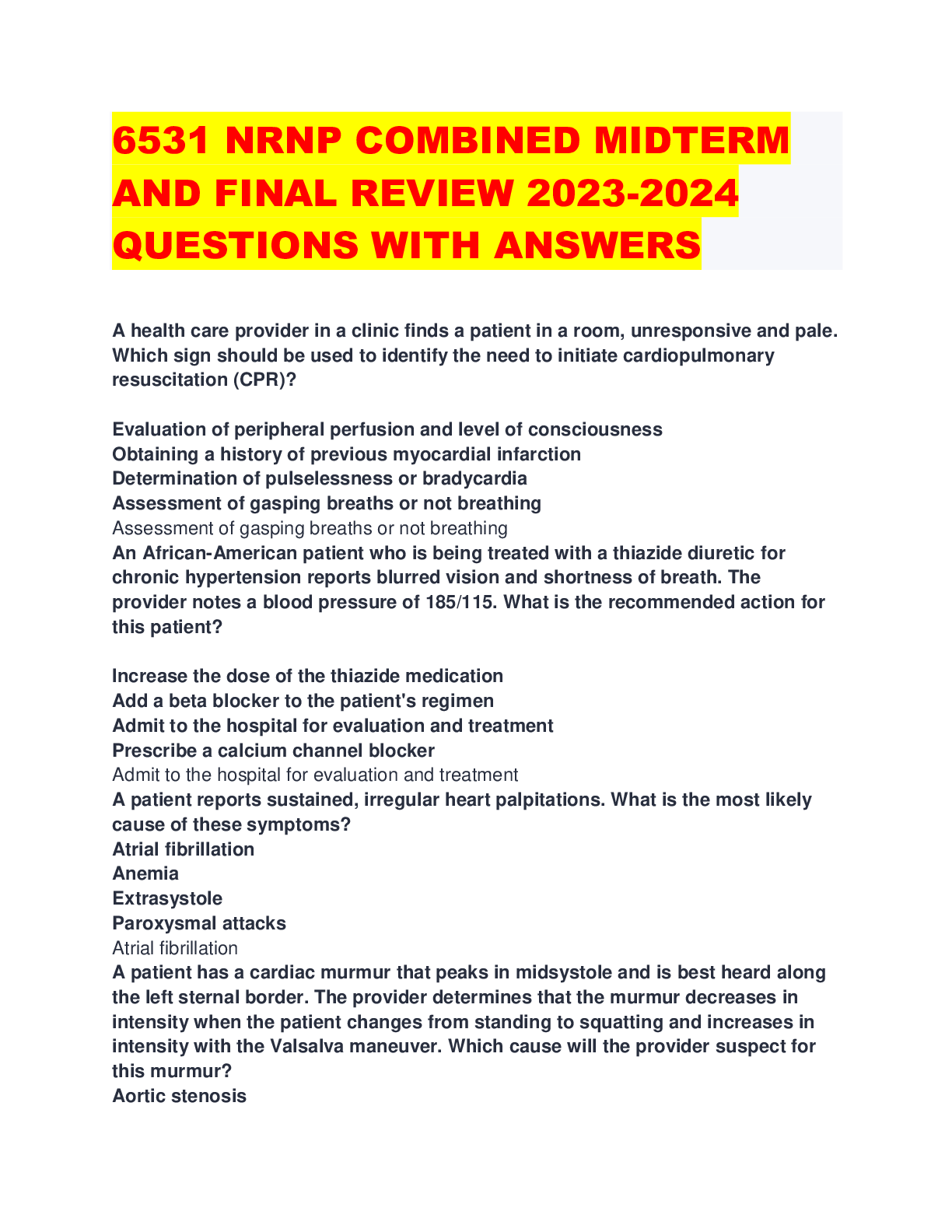
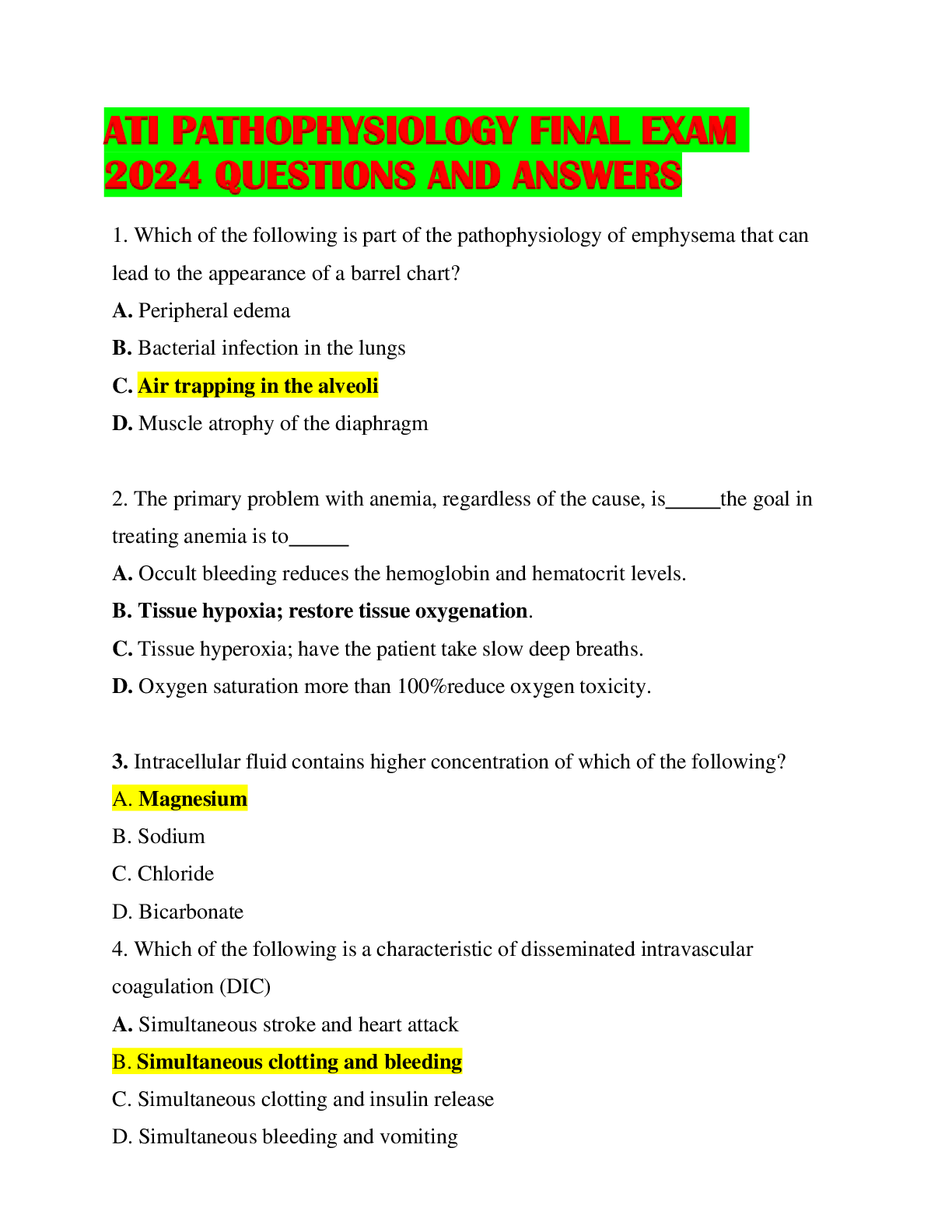

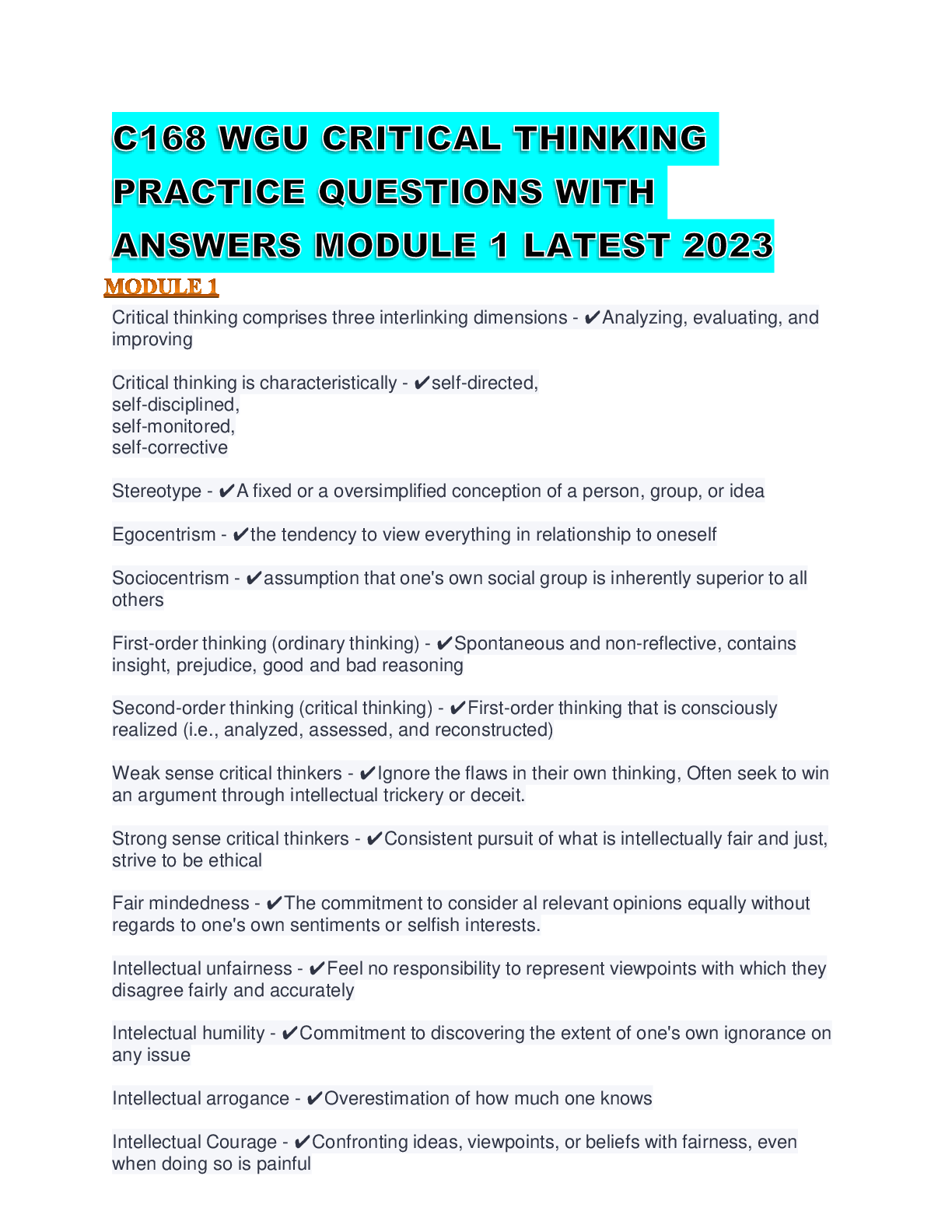
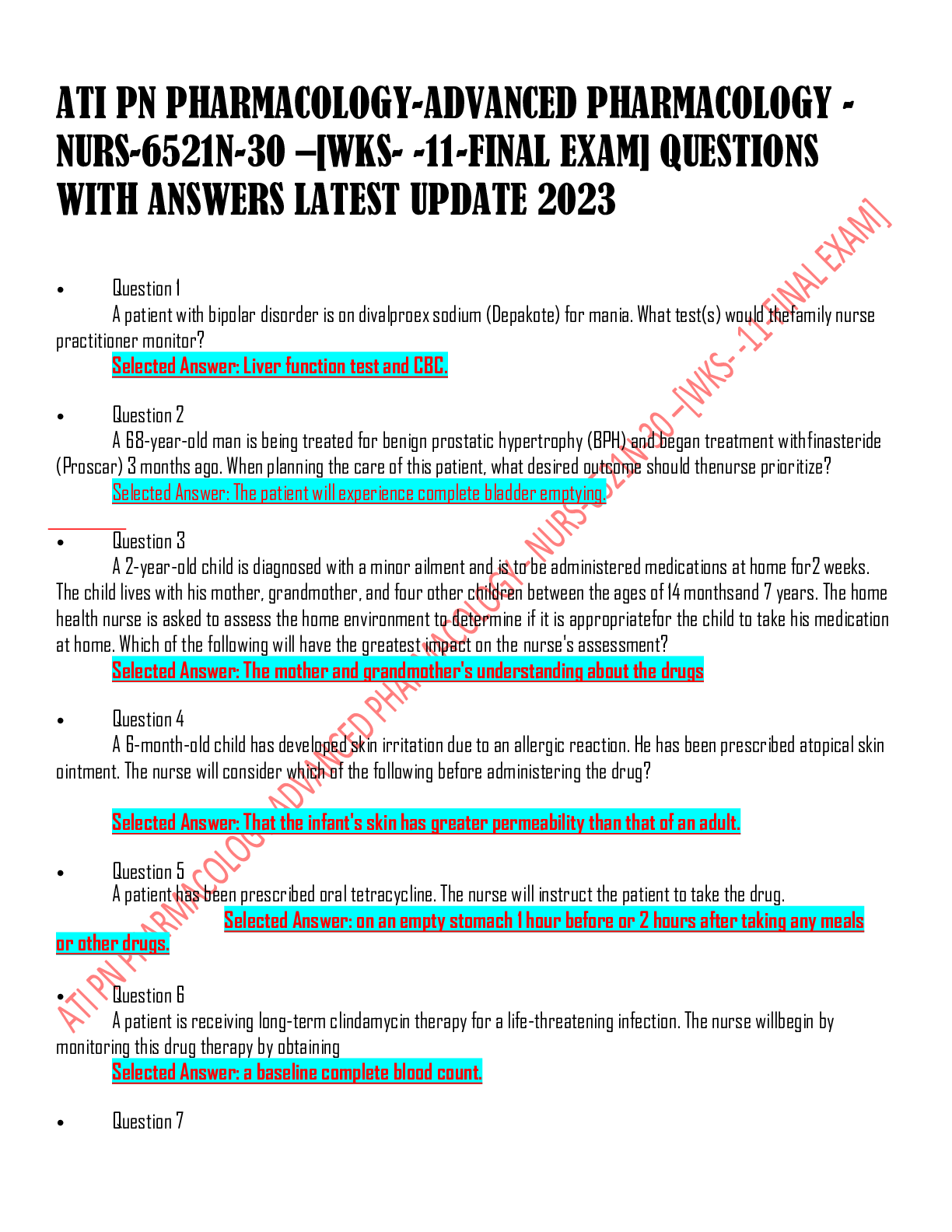
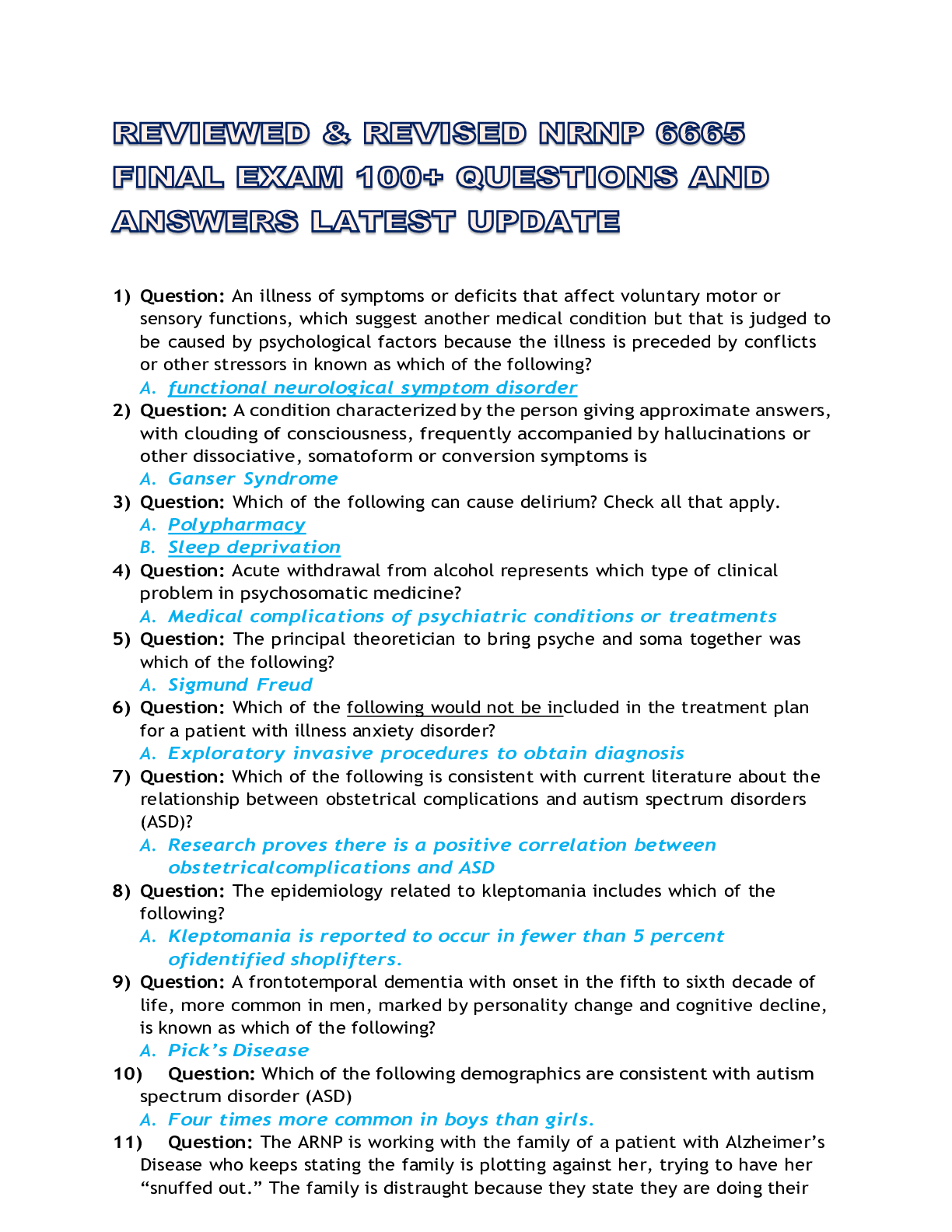
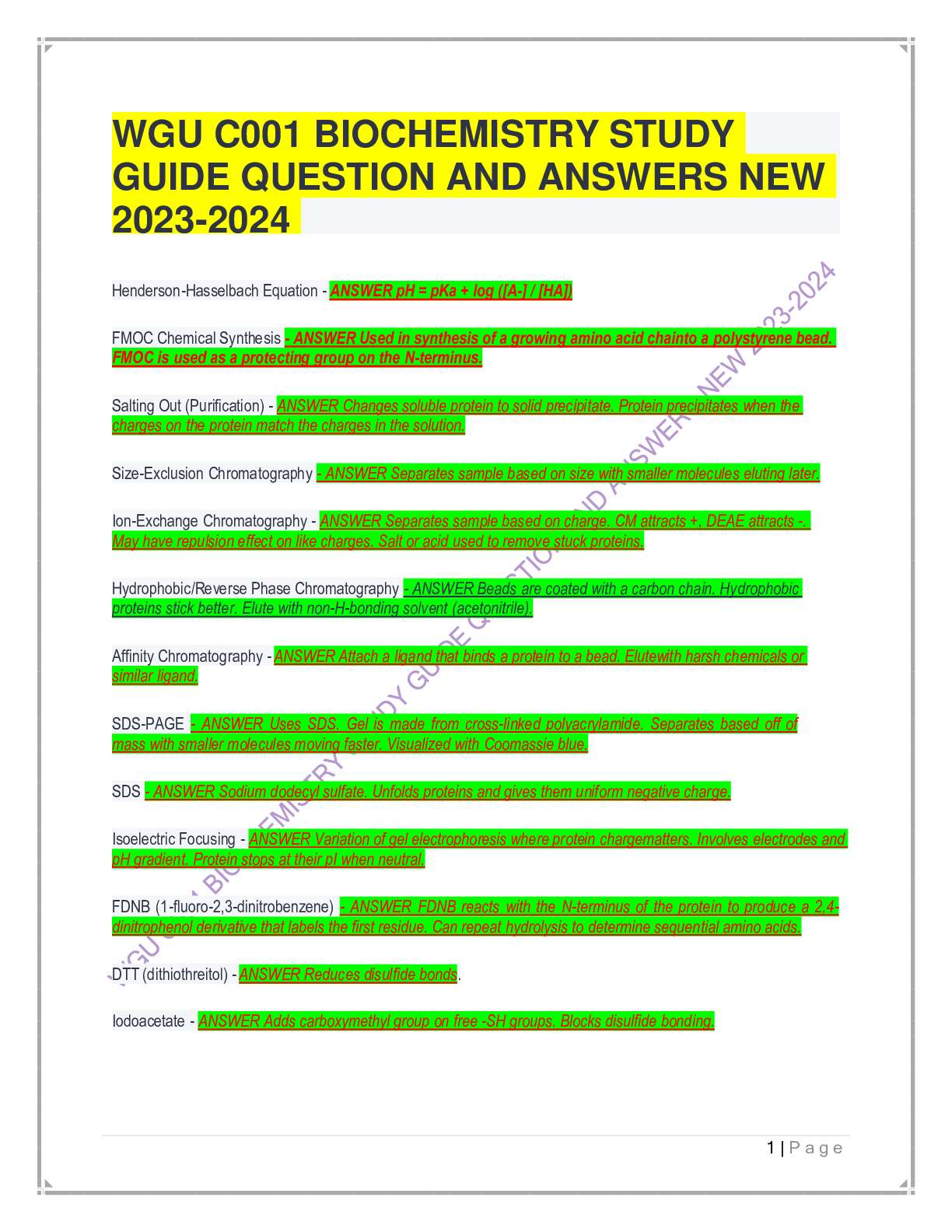
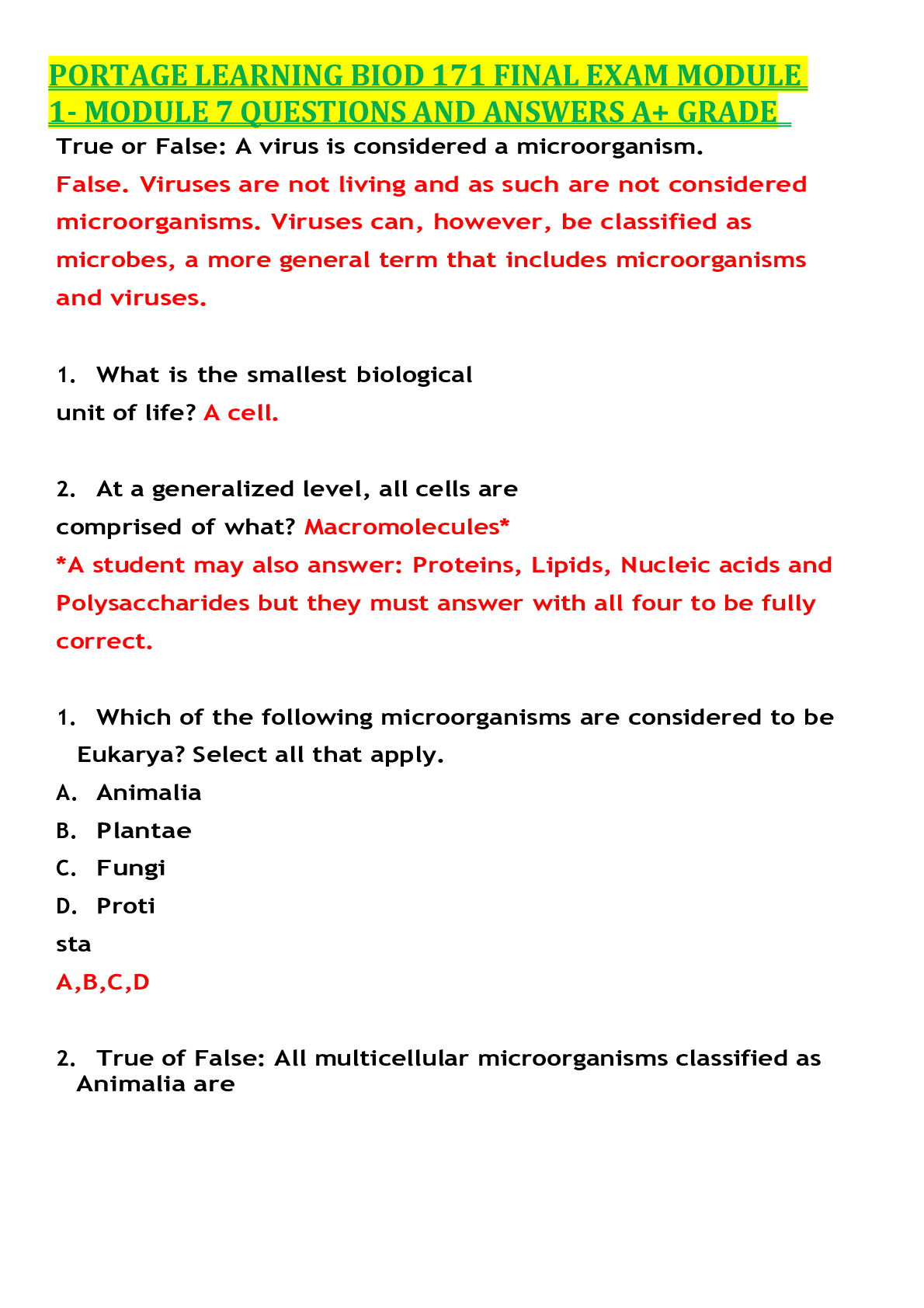
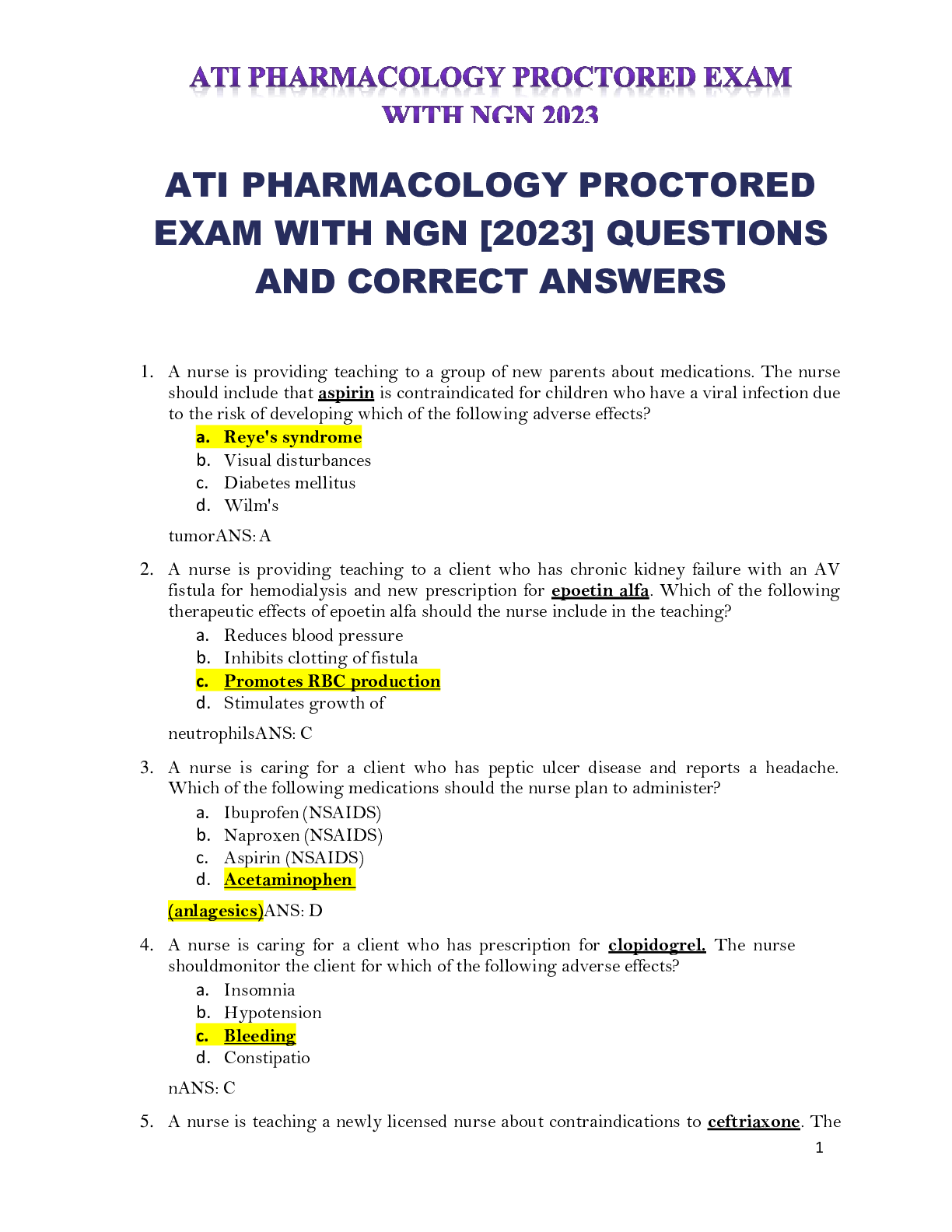

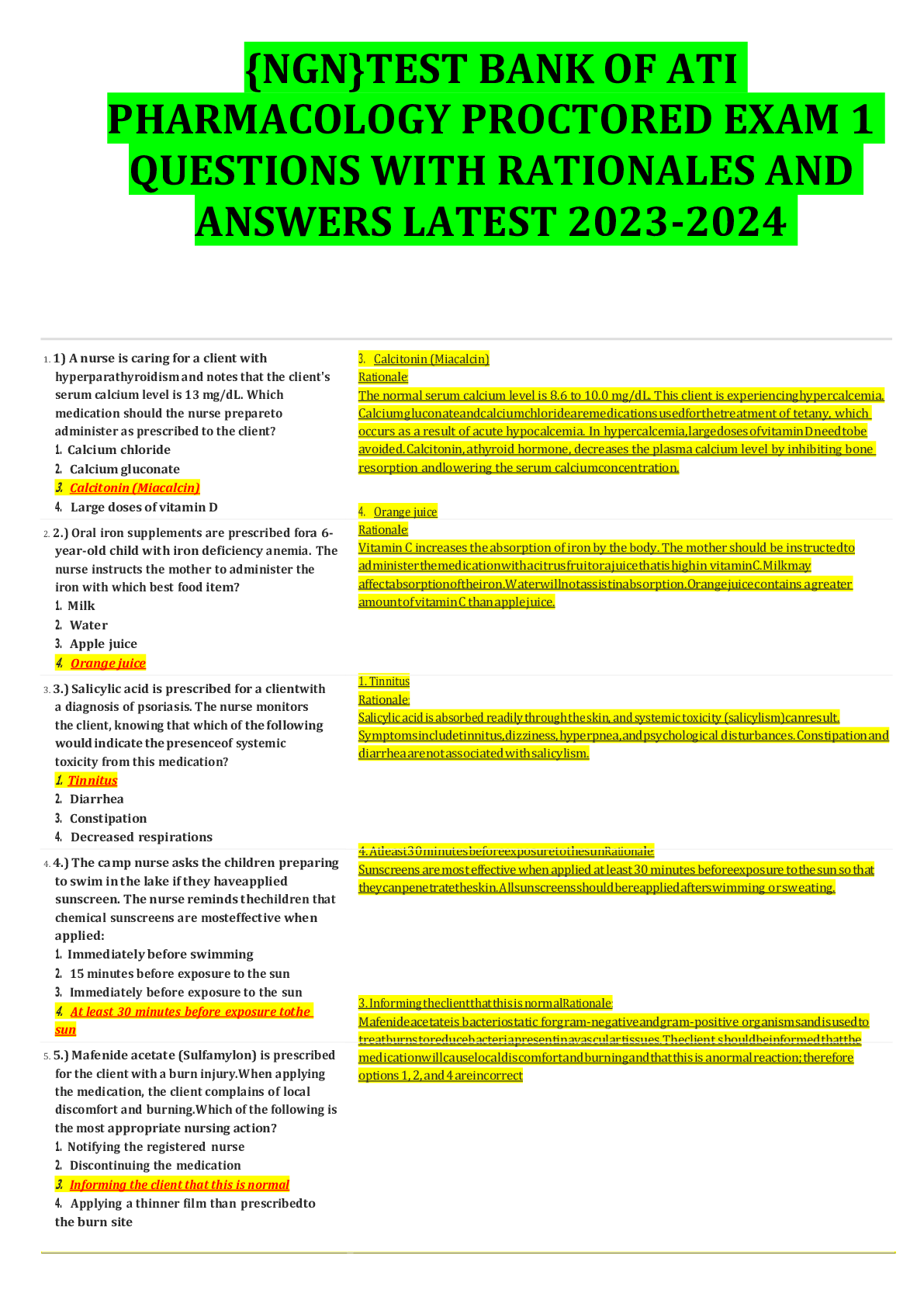
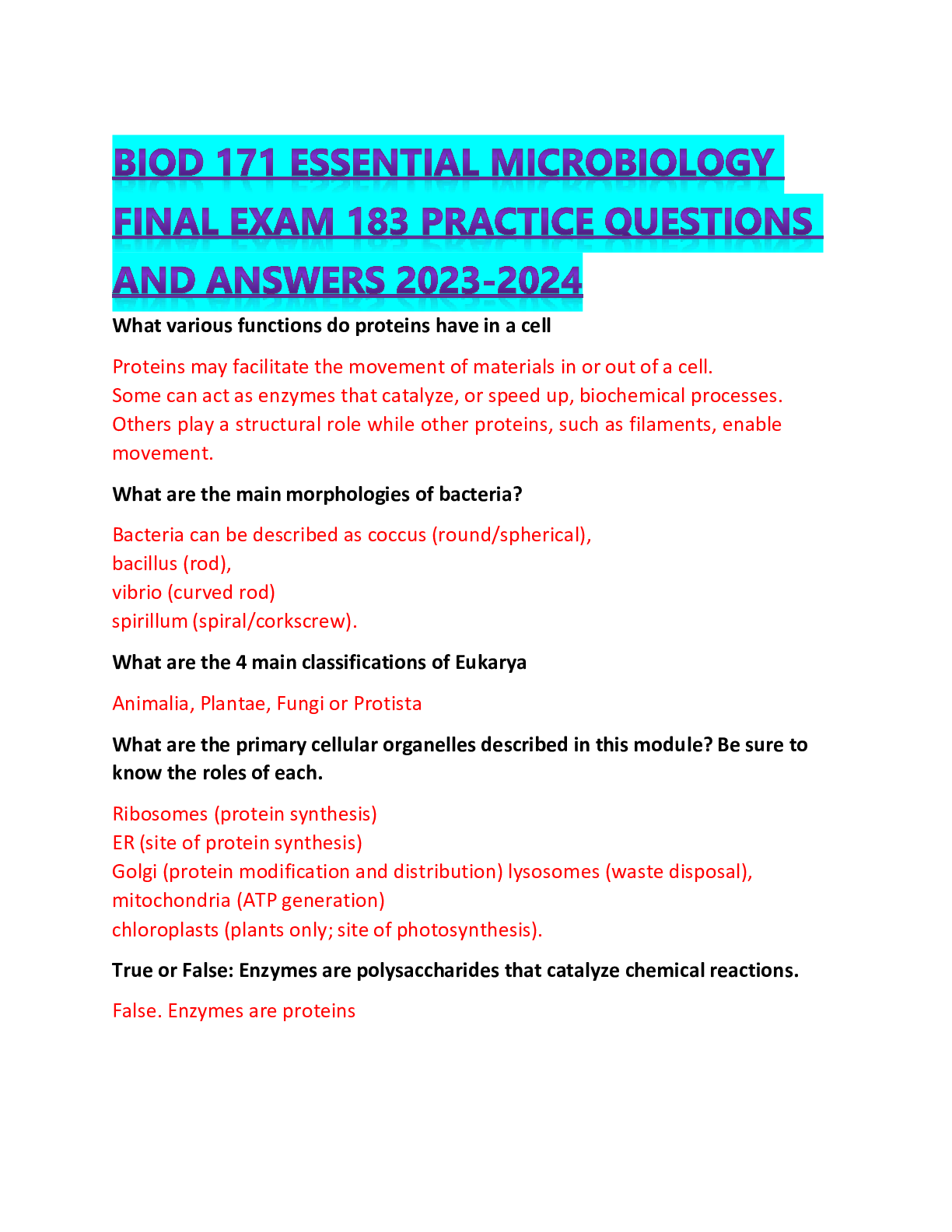



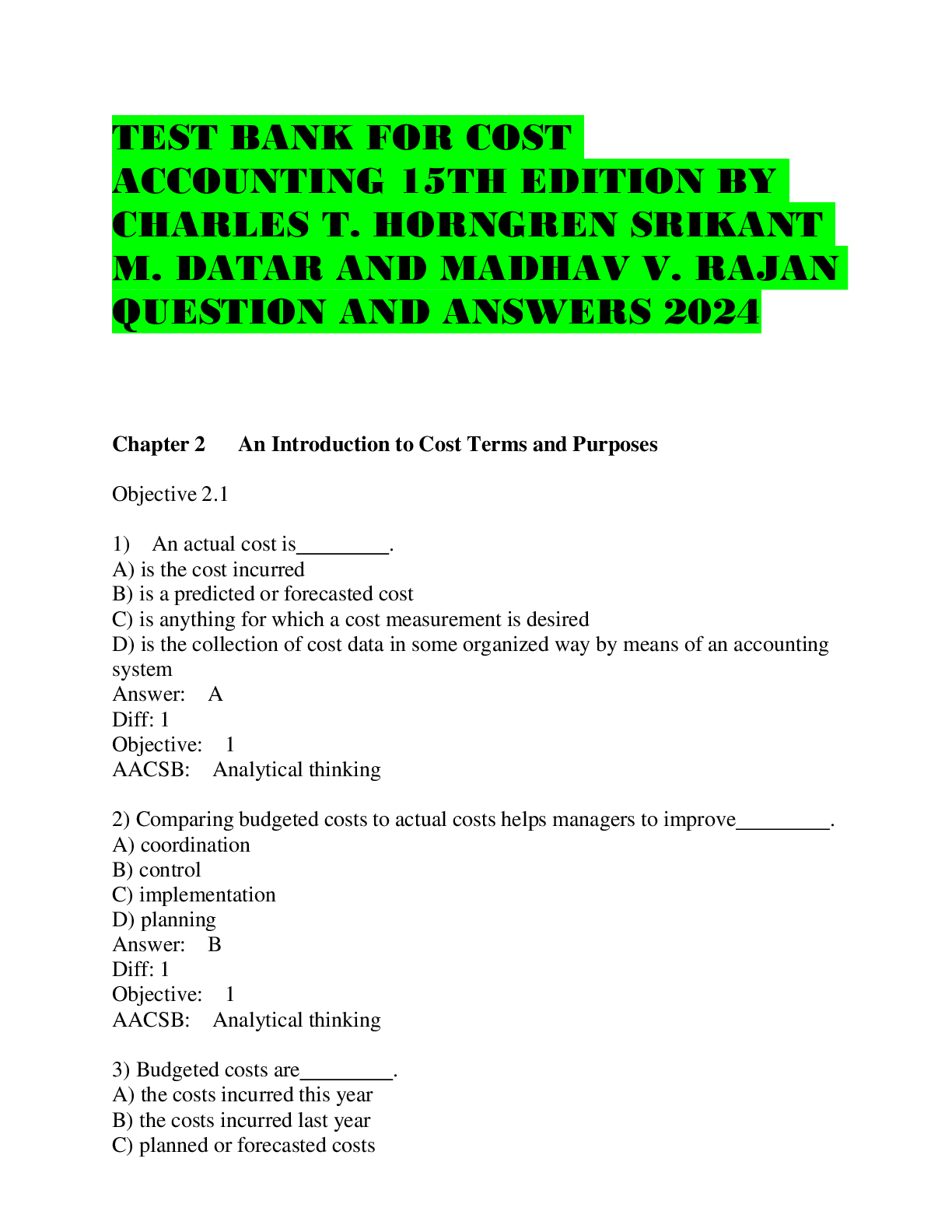







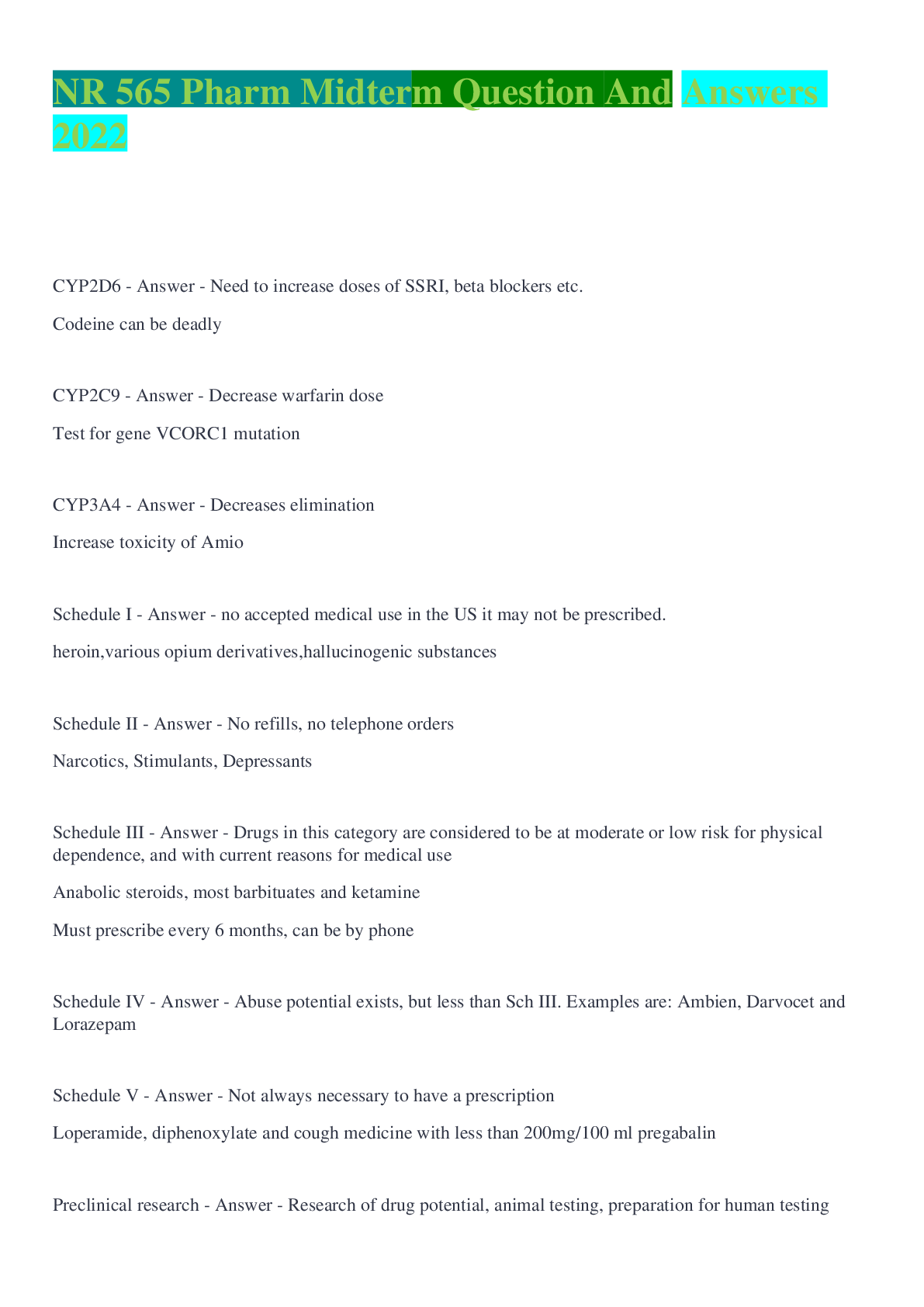
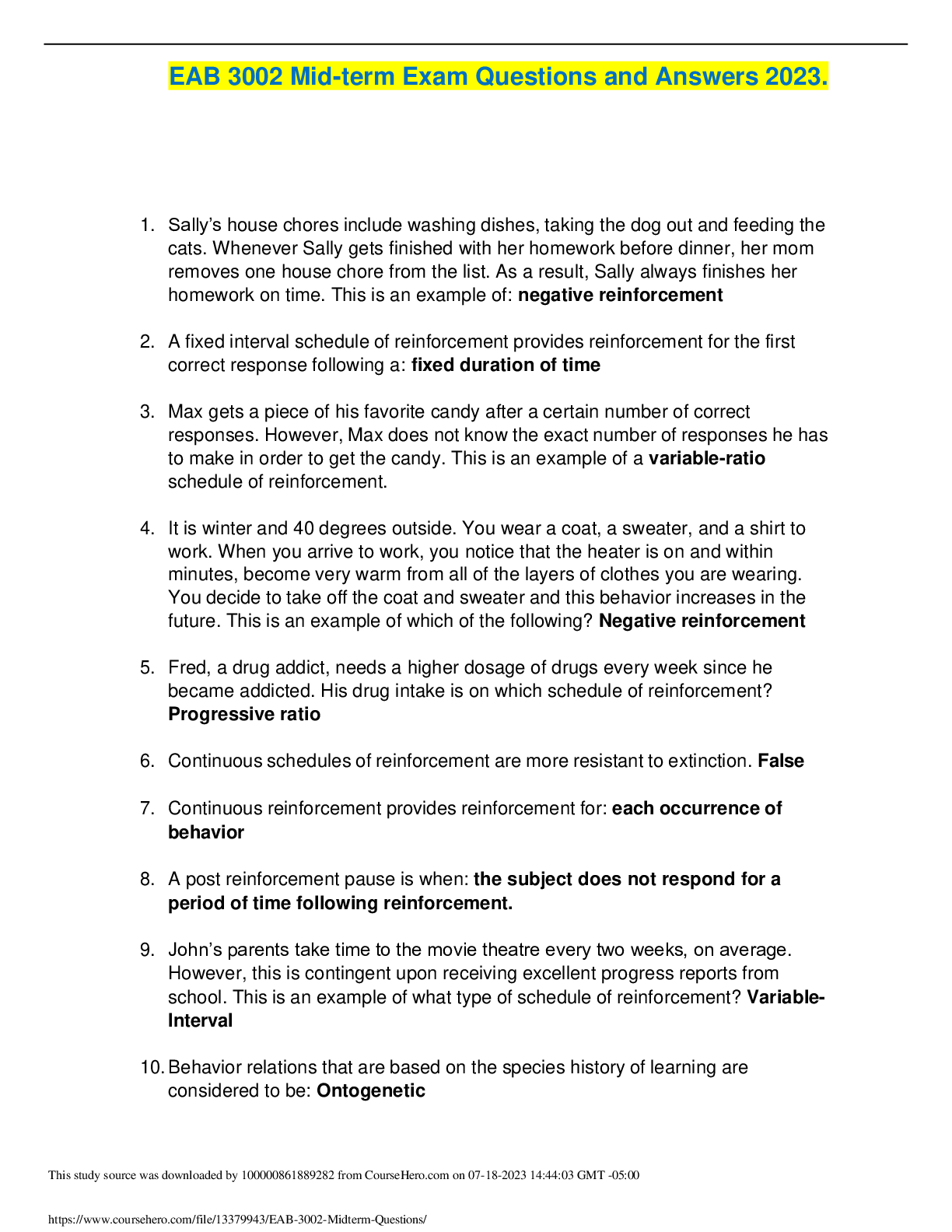
.png)





